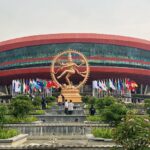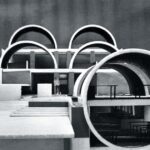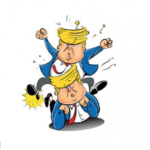One of the real challenges faced by individuals in middle age is the dilemma of balancing a stagnant work life, with the need to reinvent oneself – to move into new unexplored arenas so as to stay relevant, alive and always fresh.
This is equally so for countries and their established institutions. As a country evolves socially and culturally, its original institutional structure is in constant flux. In the over two hundred years it has taken the United States to set a course for its democracy, localized reforms and changes have continually affected its day to day functions and routines. Recent movements like Occupy Wall Street, Me Too, and Black Lives Matter that began on the streets, may not have the bureaucratic backing of programs like The New Deal or The Great Society, however they do alter cultural perceptions and signal long-term change and legislation. Even the constant restating of the American hope for ‘a more perfect union’ is a public acknowledgement that change is good and new ideas must be allowed to emerge. To be the Promised Land, the promise may never be completely fulfilled, but its mere wish is a step in the right direction.
Even historic references and symbols undergo change. There are at least twelve variations of the American national anthem, including an operatic, blues and a hip-hop version. While the original master lyrics remain unchanged, the variations are sung at baseball games, award ceremonies, public openings etc., and are seen as perfectly acceptable by the establishment. Equally the flag is both a symbol of pride and protest. It is raised on national occasions like Independence Day and George Washington’s birthday, waved at parades and flown above government buildings. But it is also burnt at rallies, stomped upon in public protests, used as face mask, as well as underwear. Its shifting alliance between positive and negative intent gives it great dynamic symbolism. What do the Indian flag and anthem achieve when hoisted or performed according to prescribed state regulations? The static nature of the act has neither private meaning nor patriotic grace.
The challenge of institutional reinvention however is most vibrant and visible in the architectural symbols of France. To conceive the Eifel Tower in a city built almost entirely in a 19th century Neo-Classicism required an act of cultural courage that willingly accepted a future technology, and made space for its public expression. The insertion of an untested vertical wrought-iron structure in the midst of a horizontally spreading city was an act of deliberate subversion, an act truly experimental, truly French. It was followed by another in the 20th century when one of the world’s oldest art museums, the Louvre chose to add to its ornate architecture a radical primary modernist geometry. The glass pyramid designed by IM Pei, a Chinese American architect, sits firmly within the public space defined by the 13th century Louvre. Is it a masterpiece, or a travesty? The French will talk about it forever, but know full well that their culture was the real beneficiary in the reinvention.
What is the Indian answer to such a grand and heroic act of subversion – a sandstone parliament building in line with historic precedence? Would the Central Vista be altered forever if a giant masonry spaceship were positioned as an art institution along India Gate? Could we ever conceive of doing anything as radical as the glass dome over the 19th century Reichstag, the German Parliament, on our own? It would test the dead-beat status quo spirit of the Central Public Works Department that maintains our monumental architecture.
European and American self-confidence comes not just from the strength of symbols and institutions, but the ability to alter, enlarge, even dismantle them. The pandemic was the sure-shot opportunity to reinvent India. At a time when disruption around the world has allowed many new ideas to proliferate, including digital schools, tele-health centres, mobile hotels and art galleries, a clear case for change could be made in a country whose public institutions are not only cracked and crumbling, but many functioning without formal structure or staff.
Now that a difficult year is coming to an end, perhaps it is the right time to ask uncomfortable questions. Not the wearisome strand directed at daily problems and crises, but new ideas and experiments that infuse fresh life-blood into a stagnant republic. Could the introduction of a philosopher in the Indian government – like the poet laureate in the British parliament – provide a more original assessment of the annual state of the country? Should Climate Change be taught in rural schools, the way it is in the Italian school system? The building of public libraries in many Columbian cities has helped reduce the country’s drug problem; could libraries bring down crime in Bihar and UP? In fact, could a daily Japanese tea ceremony help bring civility to the Lok Sabha?
Reinvention has to be based on questions we normally don’t ask. Moreover it calls on ideas that enlarge the scope of our daily thinking and endeavours. If the new year is going to be at all different, even better, it will require a belief in some lateral optimism, and a hope in approaches untried and untested.
-Gautam Bhatia




